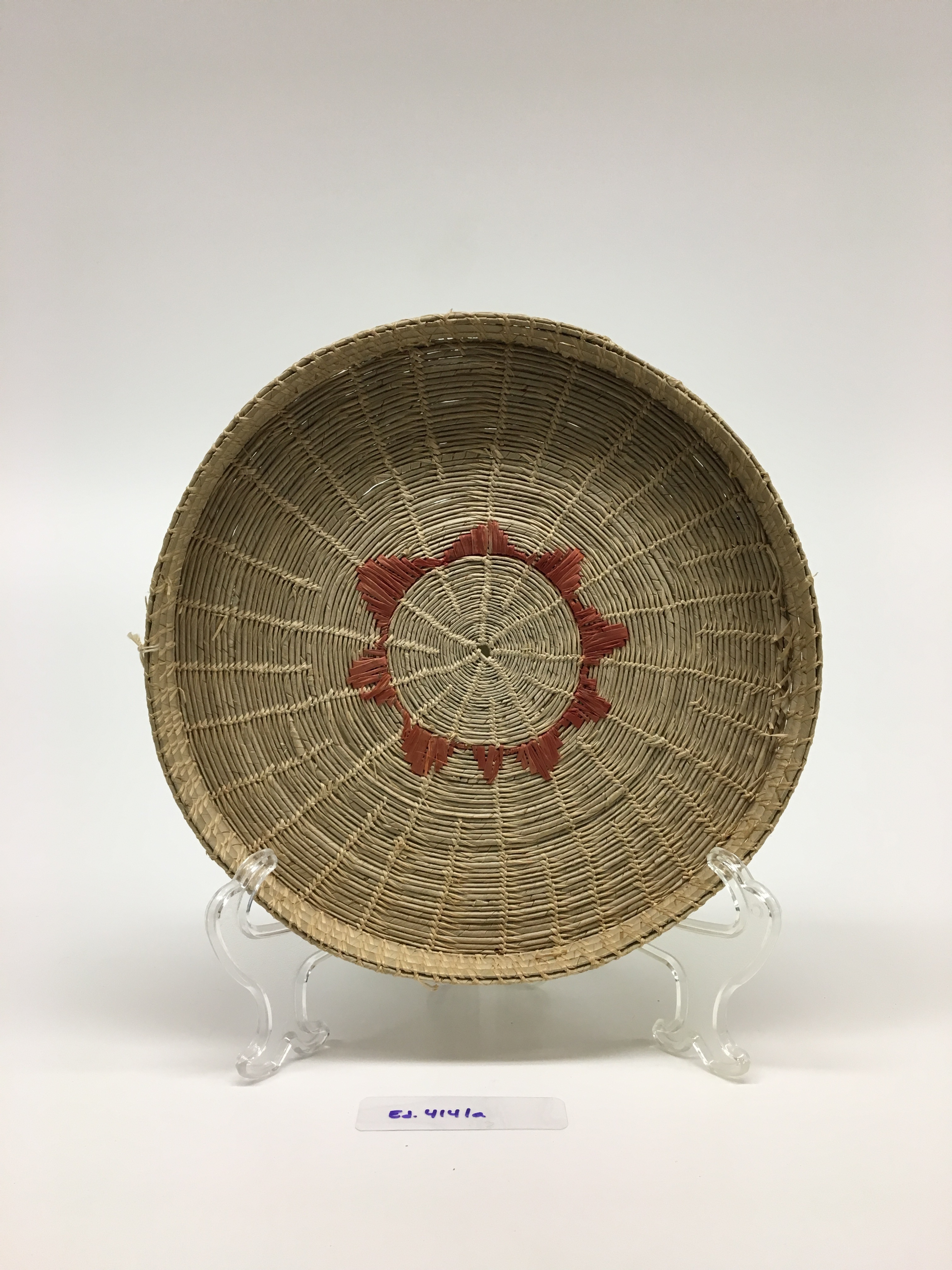
Iep (basket)
mālwe (coconut frond midrib)
maan̄ (pandanus leaves)
kimej (coconut leaves (from shoot))
jab (jān l̗o̗) (hibiscus fiber)
ED# 4141 a
Accessioned November 1954.
Iep ej itok ilo elōn̄ nemāme kab wāween kōjerbali. Elōn̄ iep ejjel̗o̗k aer jād, ak ewōr jet elōn̄ aer jād. Enan̄in aolep iep rej jerbal n̄an nene (m̗ōn̄ā, jabawōt ilo m̗ōn jar ko), ak jet rej āji n̄an kainōknōk dapin mon jokwe ko. Iep in ej kōm̗m̗an jān mālwe, maan̄, kimej, kab jab. Rej kūtimi mālwe ko kōn maan̄. N̄an kōpooj maan̄ eo, rej errarre innām iiaki n̄an julo̗k m̗ake/m̗akur ko. Innām rej kab innini maan̄ ko bwe ren mālij. Aliktata, rej karōki iturin doon im eo̗outi kōn kimej eo ilo aer tate jindo jan iolap m̗ae iien eo rotōpar jon̄an depakpak eo rej kōn̗aan. Innām bun̄tōn kein n̄an āji rej bar āliji, ijoke kiiō, rej karōki ioon doon lōn̄l̗o̗k. Ijeko rej kōn̗aan bwe en alikkar kimej ko em̗ōj kōmatti, rej kōjerbale jab eo. Ejjel̗o̗k libbukwe ilo iep in kōnke libbukwe ej kab jerbal im el̗l̗aak elōn̄ iiō tok ālikin Pata eo an Lal̗ in Kein Karuo.
Baskets come in different forms for different purposes. Some baskets do not have a lid, but there are a few baskets that have lids. Almost every basket is designed for storage (food, valuables, church offerings), but some are created as ornaments and wall decorations. This basket is made from coconut frond midrib, pandanus leaves, coconut leaves (from a new shoot), and hibiscus fiber. The midrib is covered with the pandanus. To produce the fibers, the pandanus is first warmed either in the sun or over a fire, then the thorns are removed. The leaves are then pounded to make them flexible. Finally, they are each placed next to one another and tied with the coconut leaves radiating outwards to the desired diameter. Then the process is repeated, except this time the midribs are placed on top of one another upwards. Where color is desired, the hibiscus fiber is applied. There are no shells attached because adding shells to baskets is a very modern practice which arose after World War II.

Add a Comment